Monthly Updates on Recent Books in the History of Christianity
To raise awareness of recent books in the history of Christianity, the editorial staff of Church History: Studies in Christianity and Culture highlights each month a list of 10-15 books in diverse periods and geographical regions that we hope will be of interest to our members. We include here below the 23rd monthly list, chosen by our staff, with excerpts from the publishers’ blurbs.
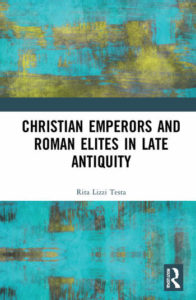
Rita Lizzi Testa, Christian Emperors and Roman Elites in Late Antiquity. 2022
This book brings together a number of case studies to show some of the ways in which, as soon as the Roman Senate gained new political authority under Constantine and his successors, its members crowded the political scene in the West.
In these chapters, Rita Lizzi Testa makes much of her work – the fruit of decades of research –available in English for the first time. The focus is on the aristocratics' passion for aruspical science, the political use of exphrastic poems, and even their control of the hagiographic genre in the late sixth century. She demonstrates how Roman senators were chosen as legates to establish proactive relations with Christian emperors, their ministers and military commanders, and Eastern and Western provincial elites. Senators wove a web of relations in the Eastern and Western empires, sewing and stitching the empire's fabric with their diplomatic skills, wealth, and influence, while lively and highly litigious assembly activity still required of them a cultured rhetoric. Through employing astute political strategies, they maintained their privileges, including their own beliefs in ancient cults.
Christian Emperors and Roman Elites in Late Antiquity provides a crucial collection for students and scholars of Late Antique history and religion, and of politics in the Late Roman Empire.

Peter Biller and L.J. Sackville, eds. Inquisition and Knowledge, 1200-1700. 2022
The Boydell Press/York Medieval Press
The collection, curation, and manipulation of knowledge were fundamental to the operation of inquisition. Its coercive power rested on its ability to control information and to produce authoritative discourses from it - a fact not lost on contemporaries, or on later commentators. Understanding that relationship between inquisition and knowledge has been one of the principal drivers of its long historiography. Inquisitors and their historians have always been preoccupied with the process by which information was gathered and recirculated as knowledge. The tenor of that question has changed over time, but we are still asking how knowledge was made and handed down - to them and to us - and how their sense of what was interesting or useful affected their selection.
This volume approaches the theme by looking at heresy and inquisition in the Middle Ages, and also at how they were seen in the sixteenth and seventeenth centuries. The contributors consider a wide range of medieval texts, including papal bulls, sermons, polemical treatises and records of interrogations, both increasing our knowledge of medieval heresy and inquisition, and at the same time delineating the twisting of knowledge. This polarity continues in the early modern period, when scholars appeared to advance learning by hunting for medieval manuscripts and publishing them, or ensuring their preservation through copying them; but at the same time, as some of the chapters here show, these were proof texts in the service of Catholic or Protestant polemic. As a whole, the collection provides a clear view of - and invites readers' reflection on - the shading of truth and untruth in medieval and early modern "knowledge" of heresy and inquisition.
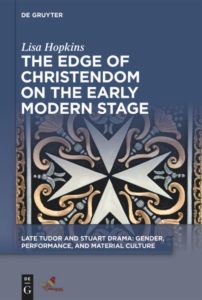
Lisa Hopkins, The Edge of Christendom on the Early Modern Stage. 2022
Throughout the sixteenth and seventeenth centuries, the edges of Europe were under pressure from the Ottoman Turks. This book explores how Shakespeare and his contemporaries represented places where Christians came up against Turks, including Malta, Tunis, Hungary, and Armenia. Some forms of Christianity itself might seem alien, so the book also considers the interface between traditional Catholicism, new forms of Protestantism, and Greek and Russian orthodoxy. But it also finds that the concept of Christendom was under threat in other places, some much nearer to home. Edges of Christendom could be found in areas that were or had been pagan, such as Rome itself and the Danelaw, which once covered northern England; they could even be found in English homes and gardens, where imported foreign flowers and exotic new ingredients challenged the concept of what was native and natural.
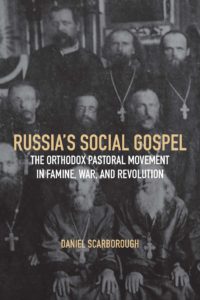
Daniel Scarborough, Russia’s Social Gospel: The Orthodox Pastoral Movement in Famine, War, and Revolution. 2022
The late Russian Empire experienced rapid economic change, social dislocation, and multiple humanitarian crises, enduring two wars, two famines, and three revolutions. A “pastoral activism” took hold as parish clergymen led and organized the response of Russia’s Orthodox Christians to these traumatic events. In Russia’s Social Gospel, Daniel Scarborough considers the roles played by pastors in the closing decades of the failing tsarist empire and the explosive 1917 revolutions.

William Marling, Christian Anarchist: Ammon Hennacy, A Life of the Catholic Left. 2022
Ammon Hennacy was arrested over thirty times for opposing US entry in World War 1. Later, when he refused to pay taxes that support war, he lost his wife and daughters, and then his job. For protesting the bombing of Hiroshima and Nagasaki, he was hounded by the IRS and driven to migrant labor in the fields of the West. He had a romance with Dorothy Day, founder of the Catholic Worker, who called him a "prophet and a peasant." He helped the homeless on the Bowery, founded the Joe Hill House of Hospitality in Salt Lake City, and protested the US development of nuclear missiles, becoming in the process one of the most celebrated anarchists of the twentieth century. To our era, when so much "protest" happens on social media, his actual sacrifices seem unworldly.
Ammon Hennacy was a forerunner of contemporary progressive thought, and he remains a beacon for challenges that confront the world and especially the US today. In this exceptional biography, William Marling tells the story of this fascinating figure, who remains particularly important for the Catholic Left. In addition to establishing Hennacy as an exemplar of vegetarianism, ecology, and pacificism, Marling illuminates a broader history of political ideas now largely lost: the late nineteenth-century utopian movements, the grassroots socialist movements before World War I, and the antinuclear protests of the 1960s. A nuanced study of when religion and anarchist theory overlap, Christian Anarchist shows how Hennacy's life at the heart of radical libertarian and anarchist interventions in American politics not only galvanized the public then, but offers us new insight for today.
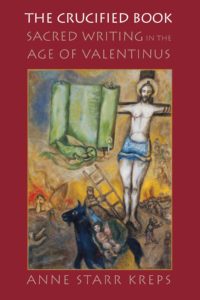
Anne Starr Kreps, The Crucified Book: Sacred Writing in the Age of Valentinus. 2022
University of Pennsylvania Press
In the Gospel of Truth, a second-century text associated with the Christian Platonist Valentinus, a crucified Jesus is depicted as wrapped in a scroll and reading aloud the contents of his heart as he dies. This is just one of many strange appearances of the physical book in this text and in the surviving fragments of Valentinus. Through its representations of the written word, Anne Kreps argues, the Gospel of Truth promoted a living document perspective on the holy book, encouraging the generation of religious books as new sources of revelatory authority.
The Crucified Book locates the Gospel of Truth in a broader ancient debate about books and their attendant authority. Roman and Jewish texts exhibit similar efforts to equate holy persons with holy texts, while Christian heresiologists exhibit awareness of the phenomenon even as they condemn it. Although the Gospel of Truth is often set apart from mainstream Christianity in scholarship, its ideas about the nature of authoritative writing engaged with Greco-Roman culture and cohered with Jewish and Christian ideas about books in antiquity. Valentinus' views about the relationship between the oral and the written dovetailed with thinking on the nature of the sacred book that gradually became the trademark of Rabbinic Judaism, Kreps contends. Ultimately, because the Gospel of Truth reflects a mind that was at the center of the discursive debates that formed Judaism and Christianity, her book demonstrates the usefulness of so-called heretical texts for discussions on the parting of the ways between the two traditions.

Kirk D. Farney, Ministers of a New Medium: Broadcasting Theology in the Radio Ministries of Fulton J. Sheen and Walter A. Maier. 2022
During the anxiety-laden period from the Great Depression through World War II to the Cold War, Americans found a welcome escape in the new medium of radio. Throughout radio's "Golden Age," religious broadcasting in particular contributed significantly to American culture. Yet its historic role often has been overlooked.
In Ministers of a New Medium, Kirk D. Farney explores the work of two groundbreaking leaders in religious broadcasting: Fulton J. Sheen and Walter A. Maier. These clergymen and professors—one a Catholic priest, the other a Lutheran minister—each led the way in combining substantive theology and emerging technology to spread the gospel over the airwaves. Through weekly nationwide broadcasts, Maier's The Lutheran Hour and Sheen's Catholic Hour attracted listeners across a spectrum of denominational and religious affiliations, establishing their hosts—and Christian radio itself—as cultural and religious forces to be reckoned with.
Farney examines how Sheen and Maier used their exceptional erudition, their sensitivity to the times, their powerful communication skills, and their unwavering Christian conviction, all for the purpose of calling the souls of listeners and the soul of a nation to repentance and godliness. Their combination of talents also brought their respective denominations, Roman Catholicism and Missouri Synod Lutheranism, from the periphery of the American religious landscape to a much greater level of recognition and acceptance. With careful attention to both the theological content and the cultural influence of these masters of a new medium, Farney's study sheds new light on the history of media and Christianity in the United States.

Philip D. Hill, A Rebel Saint: Baptist Wriothesley Noel, 1798-1873. 2022
Baptist Noel (1798-1873) has been described by the American Evangelical Anglican historian Grayson Carter as a towering figure in nineteenth-century Evangelicalism, but he has been written out of its story because he was a saintly rebel who counted a good conscience more valuable than a good standing. This ultimately led him to abandon his glittering Anglican career and aristocratic family to become a Baptist minister. A Rebel Saint is a comprehensive study of Noel's life, work and thought, correcting the neglect of his remarkable Anglican and Baptist ministries and his many years of prominence in Evangelical life. Philip Hill ably illustrates his influence on issues including the Irvingite controversy, the opposition to the Tractarian movement, and Evangelical ecumenism, and explains his centrality in the establishment of the Evangelical Alliance and the London City Mission. Scholars of Evangelical history will greatly value this account of a pivotal figure, while all will be inspired by his story of sacrifice of fame and fortune for the sake of obeying religious conscience.
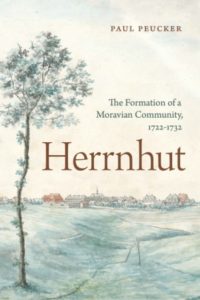
Paul Peucker, Herrnhut: The Formation of a Moravian Community, 1722-1732. 2022
Pennsylvania State University Press
In June 1722, three families from Moravia settled on the estate of Count Nikolaus Ludwig von Zinzendorf in Berthelsdorf, Saxony. Known as the community of Herrnhut, their settlement quickly grew to become the epicenter of a transatlantic religious movement, one that would attract thousands of Europeans, American Indians, and enslaved Africans: the Moravian Church.
Written by one of the leading archivists of the Moravian Church, this book investigates the origins of Herrnhut. Paul Peucker argues that Herrnhut was intended to be a Philadelphian community, uniting “true Christians” from all denominations. It was a separatist movement, but it concealed its separatism behind the pretense of an affiliation with the Lutheran Church and behind a chosen historical identity, that of the renewed Unity of Brethren. Peucker’s analysis, based on hundreds of documents from archives in Germany and the United States, demonstrates how Herrnhut was able to grow and thrive despite existing regulations against new religious groups, uncovers Count Zinzendorf’s role in keeping Herrnhut outside the state church, and provides a new foundation from which to interpret the Moravian church’s later years.
Three centuries after Herrnhut’s founding, this intriguing history brings to light new information about the early years of the Moravian church. Peucker’s work will be especially valuable to students and scholars of eighteenth-century religion, Pietism, and Moravian history.
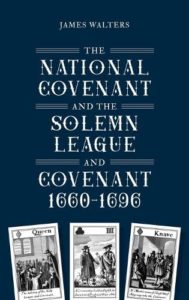
James Walters, The National Covenant and the Solemn League and Covenant, 1660-1696. 2022
Until now, scholarship on the Covenants has mainly focused on their role in the conflicts of the 1640s, with discussion of the Covenants after 1660 mostly limited to the context of violent Scottish radicalism. This book moves beyond a rigid focus on Scotland to explore the legacy of the Covenants in England. It examines the discourse surrounding key events in the Restoration period and traces the influence of the Covenants in the context of radical Presbyterianism, and in mainstream debates around politics, church government, and the constitution of the British kingdoms.
The Covenants continued to have relevance in two primary respects. Firstly, the Covenants were used as reference points for discussing the competing legacies of the English and Scottish Reformations and the confused issues of church and state that defined the Restoration period. Furthermore, the form of the Covenants as solemn individual subscriptions to a constitutional and religious model, and the political ideas that underpinned them, were emulated by those seeking to resist royal authority during the Exclusion Crisis of 1679-81, and during the events surrounding the Revolution of 1688. Thus, this book holds particular interest for students of constitutionalism, legal pluralism or civil religion in seventeenth-century Britain, and for those seeking to deepen their understanding of the intellectual origins of the Wars of the Three Kingdoms and the Revolution of 1688-9.
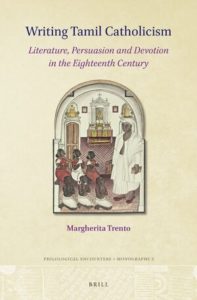
Margherita Trento, Writing Tamil Catholicism: Literature, Persuasion and Devotion in the Eighteenth Century. 2022
In Writing Tamil Catholicism: Literature, Persuasion and Devotion in the Eighteenth Century, Margherita Trento explores the process by which the Jesuit missionary Costanzo Giuseppe Beschi (1680-1747), in collaboration with a group of local lay elites identified by their profession as catechists, chose Tamil poetry as the social and political language of Catholicism in eighteenth-century South India.
Trento analyzes a corpus of Tamil grammars and poems, chiefly Beschi’s Tēmpāvaṇi, alongside archival documents to show how, by presenting themselves as poets and intellectuals, Catholic elites gained a persuasive voice as well as entrance into the learned society of the Tamil country and its networks of patronage.
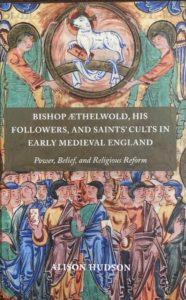
Alison Hudson, Bishop Æthelwold, His Followers, and Saints’ Cults in Early Medieval England: Power, Belief, and Religious Reform. 2022
Bishop Æthelwold of Winchester and his associates were some of the most radical monastic reformers in tenth-century Europe. In two generations, they took over most of the powerful churches in the kingdom of England and implemented a number of the policies found in their ambitious monastic manifestos. They also had a major impact on the early development of the kingdom itself, taking a role in the establishment of a shire system that lasted a thousand years, negotiations with invaders, and attempts to create a standardized English language.
Æthelwold and his circle were also enthusiastic venerators of saints. This book examines a range of sources, from hagiographies to charters, from liturgy to archaeological remains, to argue that saints' cults helped these men and women secure their power, wealth, and relationships with groups outside their monasteries. The saints that Æthelwold's circle promoted most lavishly were not necessarily the ones that they studied or the ones that matched their ideological agenda. Rather, Æthelwold's monks and nuns connected themselves to a wide range of saints, including the Virgin Mary, St Swithun, Æthelthryth of Ely, Iudoc, Grimbald, Botulf, Cuthbert, and many others. Venerating these saints helped Æthelwold and his followers appeal to other groups in society, including unreformed ecclesiastics, lay nobles, and the workers on their estates. This book therefore not only has implications for the study of early English history and literature, but also for the history of western European monasticism and saints' cults more generally.
Finally, for staying up-to-date on the latest titles in all fields, we recommend regularly perusing New Books Network and its "New Books in Christian Studies” page. These pages are updated regularly.
